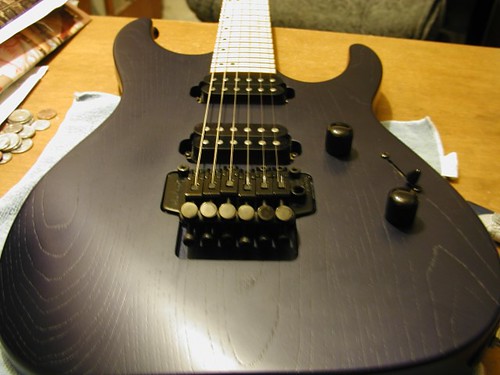First of all, hello everyone, new to the board. I'm in the planning stages of my first warmoth build and I could use some help. I'm planning on building an iceman (I'm lefty, need I say more?) and I'm trying to sort out how to get the finish that I'm looking for.
Body and neck wise, I'm planning on a mahogany body and a maple neck with ebony fingerboard. My intention is to make the guitar completely black. Body, neck, headstock, and hardware. However, I don't want to do a gloss finish. Ideally, I'd like a satin finish or a very very dark black dye finish. Something kind of "industrial" looking. So, I guess my question is actually a two parter. Does anyone know if Warmoth can do a satin finish?(I know I could contact them about this, but not the next part, so I figured I'd ask this here too)
Second part, if they can't, what would my best bet be to do it myself? It is my first build, so obviously, if I am going to be doing the finish myself, I'd get some wood to practice on first. I'm going for something like this
http://www.blizzardbeast.com/albums/meshuggah0308/meshuggah032908_27.jpg
Except not 8 string, obviously. And I know that pic is in black and white, that guitar actually has some kind of dyed finish( http://i13.photobucket.com/albums/a255/20bag/Meshuggah%20Mar27/DSC01187.jpg ) but this pic gives a closer visual to what I am looking to do(the actual guitar shows quite a bit of grain, I'm looking to accomplish an even darker finish). So, I'm really looking for any insight whatsoever about this. I really appreciate any help you guys can give.
Body and neck wise, I'm planning on a mahogany body and a maple neck with ebony fingerboard. My intention is to make the guitar completely black. Body, neck, headstock, and hardware. However, I don't want to do a gloss finish. Ideally, I'd like a satin finish or a very very dark black dye finish. Something kind of "industrial" looking. So, I guess my question is actually a two parter. Does anyone know if Warmoth can do a satin finish?(I know I could contact them about this, but not the next part, so I figured I'd ask this here too)
Second part, if they can't, what would my best bet be to do it myself? It is my first build, so obviously, if I am going to be doing the finish myself, I'd get some wood to practice on first. I'm going for something like this
http://www.blizzardbeast.com/albums/meshuggah0308/meshuggah032908_27.jpg
Except not 8 string, obviously. And I know that pic is in black and white, that guitar actually has some kind of dyed finish( http://i13.photobucket.com/albums/a255/20bag/Meshuggah%20Mar27/DSC01187.jpg ) but this pic gives a closer visual to what I am looking to do(the actual guitar shows quite a bit of grain, I'm looking to accomplish an even darker finish). So, I'm really looking for any insight whatsoever about this. I really appreciate any help you guys can give.



